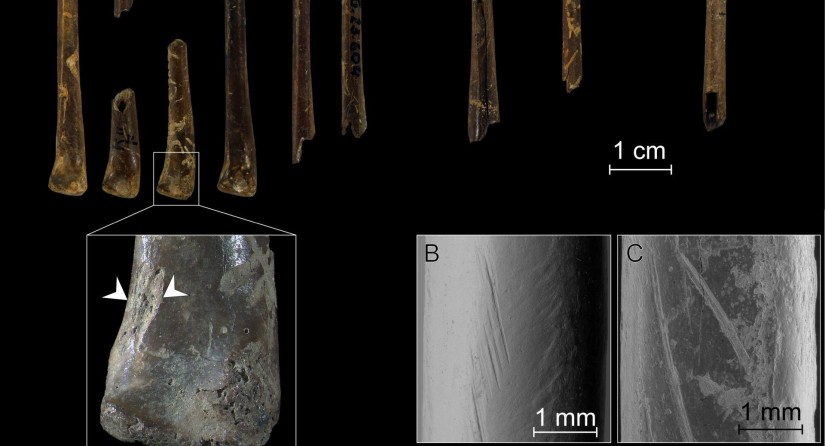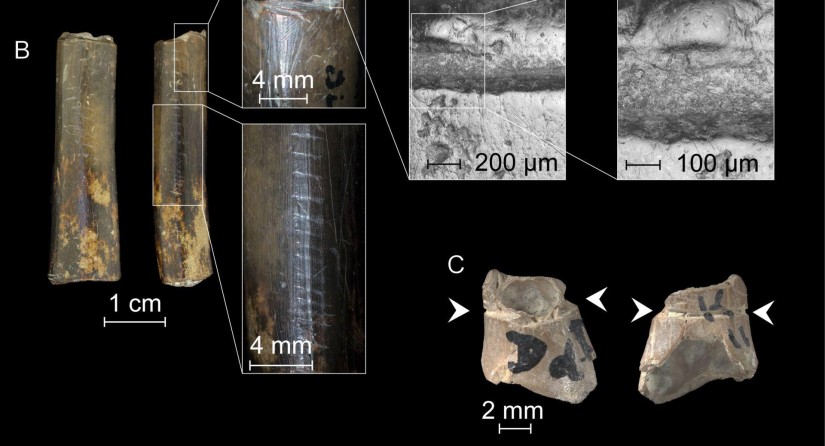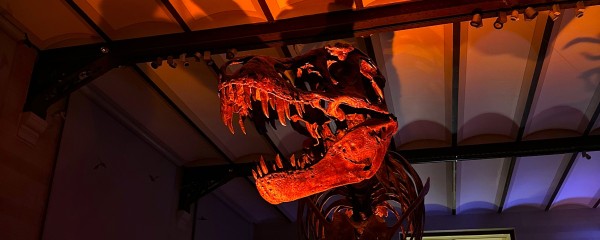Bones from 31,000 years ago indicate ancient exploitation of duck wings

A study conducted on 31,000-year-old bird remains, discovered in the 1960’s on an archaeological site from the Hainault province, suggests that hunter-gatherers of the time had a particular interest for duck wings. These remains had been processed to either obtain dried wings, or during the selection of a specific bone as raw material for craft. Or both.
Text: Maloïse Frédérick
In 1966, work for the widening of a canal in Maisières, near the city of Mons (Belgium) allowed the discovery of traces of a human occupation dating back to 31,000 years ago, the beginnings of the Gravettian culture. During excavations led by Jean de Heinzelin - discoverer of the "Ishango bone" (Congo) - archaeologists were able to uncover a rich collection of animal remains such as mammoth, reindeer, fox and various species of birds, among others. Nothing too surprising, since at the time, the site of Maisières-Canal must have been located on a riverside, likely a crossing point for animals and a strategic hunting point.
Researchers from the Royal Belgian Institute of Natural Sciences and from the University of Liège were involved in an international research project that aimed, among other things, to re-examine all the animal remains collected at Maisières-Canal. This new study has doubled the initial corpus of bird bones (which were about 30 in numbers) by reviewing the fragments that had not yet been assigned to a species. A detailed analysis of the bone's surfaces showed that more than half of them show traces of human modification.
The bones that were studied represent at least seventeen birds from six distinct species. Individuals of these species are often found at other sites of the Upper Palaeolithic and testify to a rather cold climate with an open and humid environment: snowy owl, ptarmigan, great raven, short-eared owl, probable silver plover and ducks. The latter is by far the most numerous and, curiously, all the identified duck remains are fragments of radius: with no other element of the skeleton being present.
Handling duck wings
To better understand the actions performed by hunter-gatherers that may have led to the accumulation of this peculiar assemblage of radius fragments, and the manipulations responsible for the observed tool marks, researchers at the TraceoLab of the University of Liege performed experimental cutting of duck carcasses with flint tools. They compared the results of those experiments with archaeological material, and came up with two hypotheses.

First, hunter-gatherers may have wished to obtain dried duck wings and possibly removed the radius specifically to allow the extraction of the meat without losing the stiffness of the wing. The collected meat could then be consumed rather than leaving it to rot when the wing was left to be dried.
The dried duck wings, with their iridescent feathers, could have been used as decorative elements, but they could also have had a practical role. For example, ethnography shows that modern hunter-gatherers in Siberia suspended the wings of geese and ducks to create "scaring sticks." Indeed, the long flight feathers (remiges) are rigid in these birds and produce a sound when exposed to the wind: with several sticks of this type aligned, the reindeer were directed to a specific place, where they could then be hunted. However, there is nothing to confirm such a use based on the bones of birds from Maisières-Canal.
The other possibility is that the radius, a small but robust bone, was specifically sought after as a raw material for craft activities, such as bead making. This hypothesis is also supported by the many scraping marks visible on the bone surface, suggesting intense cleaning. However, one hypothesis does not exclude the other.


A diverse exploitation of birds
In addition to the exploitation of ducks to produce dry wings or radiuses for craftwork at the Maisières-Canal site, researchers highlighted that meat of ptarmigan and snowy owl was also consumed. The bones of the latter species were used for craft purposes as well: to make tubes, some of which had been decorated with successive incisions.
The study was published in the International Journal of Osteoarchaeology.





